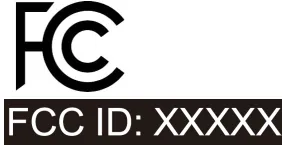
What is FCC Part 15 Class A?
Introduction to fcc part 15 Certification:
The Federal Communications Commission (FCC) Part 15 sets general testing standards for most electronic devices. It includes regulations for intentional and unintentional (incidental) radiators, which are devices that can operate without an individual license. Part 15 also outlines the technical specifications, management requirements, and other conditions associated with marketing devices under this section. The process for complying with FCC Part 15 depends on the device type, and it can fall under verification, declaration of conformity (DoC), or certification.

Verification:
Verification is the process where the manufacturer ensures that testing is completed and takes necessary measures to confirm that the device meets the relevant technical standards. Unless specifically required by the Commission, submitting sample units or representative data to demonstrate compliance is not required. The device is labeled as compliant with the verification process.
Declaration of Conformity (DoC):
The Declaration of Conformity (DoC) is a procedure where the responsible party ensures that testing is completed and takes the necessary steps to meet the relevant technical standards. Again, unless specifically required, submission of sample units or representative data is not necessary. The device is labeled as meeting the DoC process.
Certification:
Certification involves ensuring that testing is completed and necessary steps are taken to meet the relevant technical standards. Test reports and supporting documents must be submitted through a Telecommunications Certification Body (TCB) process. In addition to DoC or verification, the device is labeled as compliant with the certification process by displaying an fcc id number.
FCC Part 15 Subpart A:
Subpart A of FCC Part 15 includes specific information regarding testing and certification, such as rules, legal definitions, prohibited eavesdropping, and labeling requirements.
Key Definitions in FCC Part 15:
- Digital Devices: Devices that generate and use timed signals or pulses at a rate exceeding 9,000 pulses per second using digital technology. These devices include phones, computers, or systems performing data processing functions like computing, recording, or transmitting.
- Radio Frequency (RF) Devices: Devices that emit RF energy but are not subject to typical digital device standards. These are devices where RF is only used to enable digital device operations, rather than controlling additional functions.
- Intentional Radiators: Devices designed to intentionally generate and emit RF energy through radiation or induction.
- Class A Digital Devices: Devices that are sold for use in commercial, industrial, or business environments but are not intended for home or public use.
- Class B Digital Devices: Devices intended for use in residential environments but may also be used in commercial, industrial, or business settings. These include personal computers, calculators, and similar electronics.
Subpart B: Unintentional Radiators
FCC Part 15 Subpart B applies to unintentional radiators. These devices, which include logic circuits or oscillators, do not intentionally generate RF emissions but may radiate them unintentionally. Common unintentional radiators include personal computers, peripheral devices, radios, TVs, and set-top boxes.
Authorization Requirements for Various Devices:
- TV Broadcast Receivers: Verification required.
- FM Broadcast Receivers: Verification required.
- CB Receivers: Either DoC or Certification.
- Super Regenerative Receivers: Either DoC or Certification.
- Scanning Receivers: Certification required.
- Radar Detectors: Certification required.
- All Other Receivers: DoC or Certification.
- TV Interface Equipment: DoC or Certification.
- Cable System Terminal Equipment: DoC.
- Independent Cable Input Switch: Verification required.
- Class B Personal Computers and Peripherals: DoC or Certification.
- CPU Boards and Internal Power with Class B PCs: DoC or Certification.
- Class B Computers Assembled with Authorized Components: DoC.
- Class B External Switch Mode Power Supplies: Verification required.
- Other Class B Digital Devices and Peripherals: Verification required.
- Class A Digital Devices, Peripherals, and External Switch Mode Power Supplies: Verification required.
- Broadband Power Line (BPL): Certification required.
- All Other Devices: Verification required.
Radiation Limits in Subpart B:
FCC Part 15 Subpart B defines radiation limits for unintentional radiators. These limits are more stringent for Class B digital devices, which are intended for residential use. Manufacturers are encouraged to meet the stricter Class B limits.
Subpart C: Intentional Radiators
Subpart C covers intentional radiators, including devices such as cable positioning equipment, cordless phones, remote controls, alarm transmitters, door-opening sensors, and spread-spectrum systems used for broadband data transmission.
Devices under Subpart C must have permanently attached antennas or unique connectors to prevent unauthorized antenna use. The rules outline limits for field strength, power, power density, frequency accuracy, and harmonics or spurious emissions for these devices.
Other Subparts:
- Subpart D: Regulations for Unlicensed Personal Communication Services (UPCS) devices operating in the 1910-1930 MHz frequency range.
- Subpart E: Regulations for unlicensed National Information Infrastructure (U-NII) devices operating in the 5.15 - 5.35 GHz, 5.47 - 5.725 GHz, and 5.725 - 5.825 GHz bands.
- Subpart F: Regulations for unlicensed ultra-wideband transmission systems.
- Subpart G: Regulations for Access Broadband over Power Line (Access BPL) devices operating in the 1.705-80 MHz range.
- Subpart H: Regulations for TV Band Devices (TVBD) operating within specified broadcast TV frequencies.
This framework ensures devices comply with emission limits and technical standards to minimize interference with other devices and services.
Email:hello@jjrlab.com
Write your message here and send it to us
 Toothbrush FDA Certification Testing
Toothbrush FDA Certification Testing
 Snoring Device FDA 510k Standard Testing
Snoring Device FDA 510k Standard Testing
 Single Use Intravenous Catheter Certification Test
Single Use Intravenous Catheter Certification Test
 Silicone Material Product Compliance Certification
Silicone Material Product Compliance Certification
 What to Do If Cytotoxicity Test Results Are Positi
What to Do If Cytotoxicity Test Results Are Positi
 ISO 10993:5 Cytotoxicity Testing Methods
ISO 10993:5 Cytotoxicity Testing Methods
 FDA ISO 10993-1 Biocompatibility Evaluation Guidel
FDA ISO 10993-1 Biocompatibility Evaluation Guidel
 In Vitro Cytotoxicity Testing for Medical Devices
In Vitro Cytotoxicity Testing for Medical Devices
Leave us a message
24-hour online customer service at any time to respond, so that you worry!




